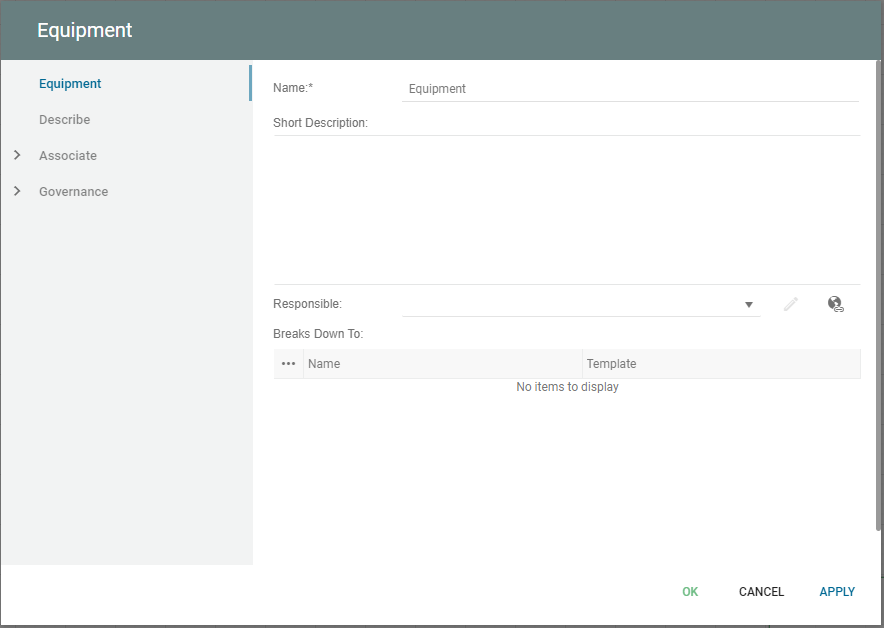Description of this template will be available soon.
Archives: Templates
Templates and model types in the QualiWare platform.
Equipment : ArchiMate
One or more physical machines, tools, or instruments that can create, use, store, move, or transform materials.
Equipment comprises all active processing elements that carry out physical processes in which materials (which are a special kind of technology object) are used or transformed. Equipment is a specialization of the node element from the Technology Layer. Therefore, it is possible to model nodes that are formed by a combination of IT infrastructure (devices, system software) and physical infrastructure (equipment); e.g., an MRI scanner at a hospital, a production plant with its control systems, etc. The name of a piece of equipment should preferably be a noun.

Equipment
The Equipment object can be used to describe an equipment asset. The object can be used in e.g. a ProductionSite or ProductRoadmap.

Enumeration Literal
Description of this template will be available soon.
Element Import
In a Class Diagram, the element import is a directed relationship that represents the usage of a specific element from one namespace within another namespace. Essentially, it enables you to “import” or “include” elements such as classes, interfaces, or datatypes from a different package or namespace into the current one. By using element import, you can create modular designs and promote the reusability of components in your system.
In the context of templates in a Class Diagram, element import can be useful when you want to reuse a particular datatype or template class defined in another package or namespace. For instance, suppose you have a template class or a custom datatype defined in one package, and you want to use it as a type for an attribute or operation parameter in a class within another package. In this case, you can use the element import relationship to indicate that the class in the second package is using the datatype or template class from the first package.
Element
Description of this template will be available soon.
Duration Constraint
Description of this template will be available soon.
Driver : ArchiMate
An external or internal condition that motivates an organization to define its goals and implement the changes necessary to achieve them. Drivers that are associated with a stakeholder are often called “concerns”. Examples of internal drivers include customer satisfaction and profitability. Drivers of change may also be external to the enterprise and need not have a stakeholder associated with them; e.g., economic changes or changing legislation. The name of a driver should preferably be a noun.

Distribution Network : ArchiMate
A physical network used to transport materials or energy. A distribution network represents the physical distribution or transportation infrastructure. It embodies the physical realization of the logical paths between facilities.

Device : ArchiMate
A physical IT resource upon which system software and artifacts may be stored or deployed for execution. A device represents a physical IT resource with processing capability. It is typically used to model hardware systems such as mainframes, PCs, smartphones, or routers. It can also be used to model virtualized hardware. Usually, devices are part of a node together with system software. Devices may be composite; i.e., consist of sub-devices. The name of a device should preferably be a noun phrase referring to the type of
hardware; e.g., “IBM System z mainframe”.

